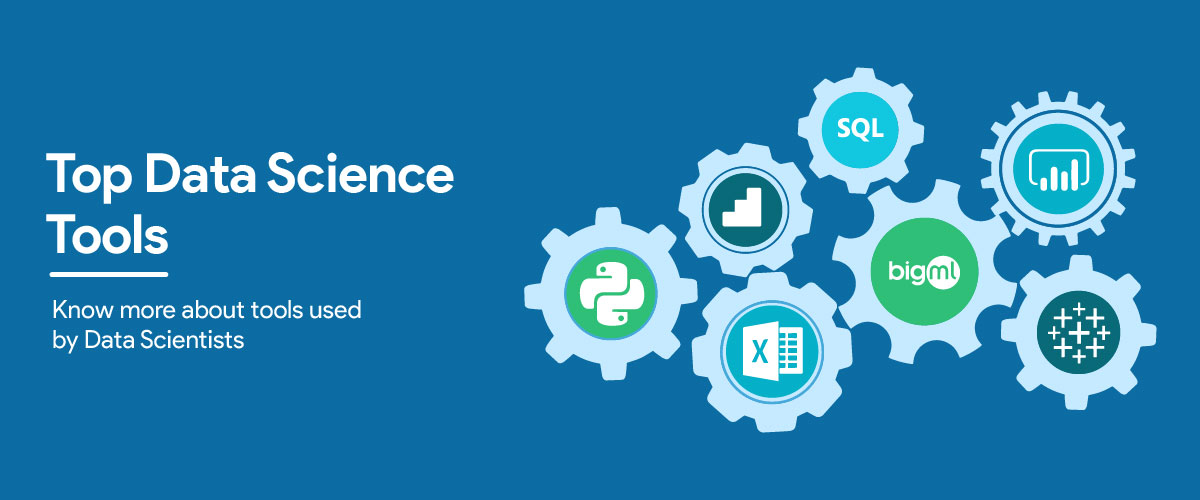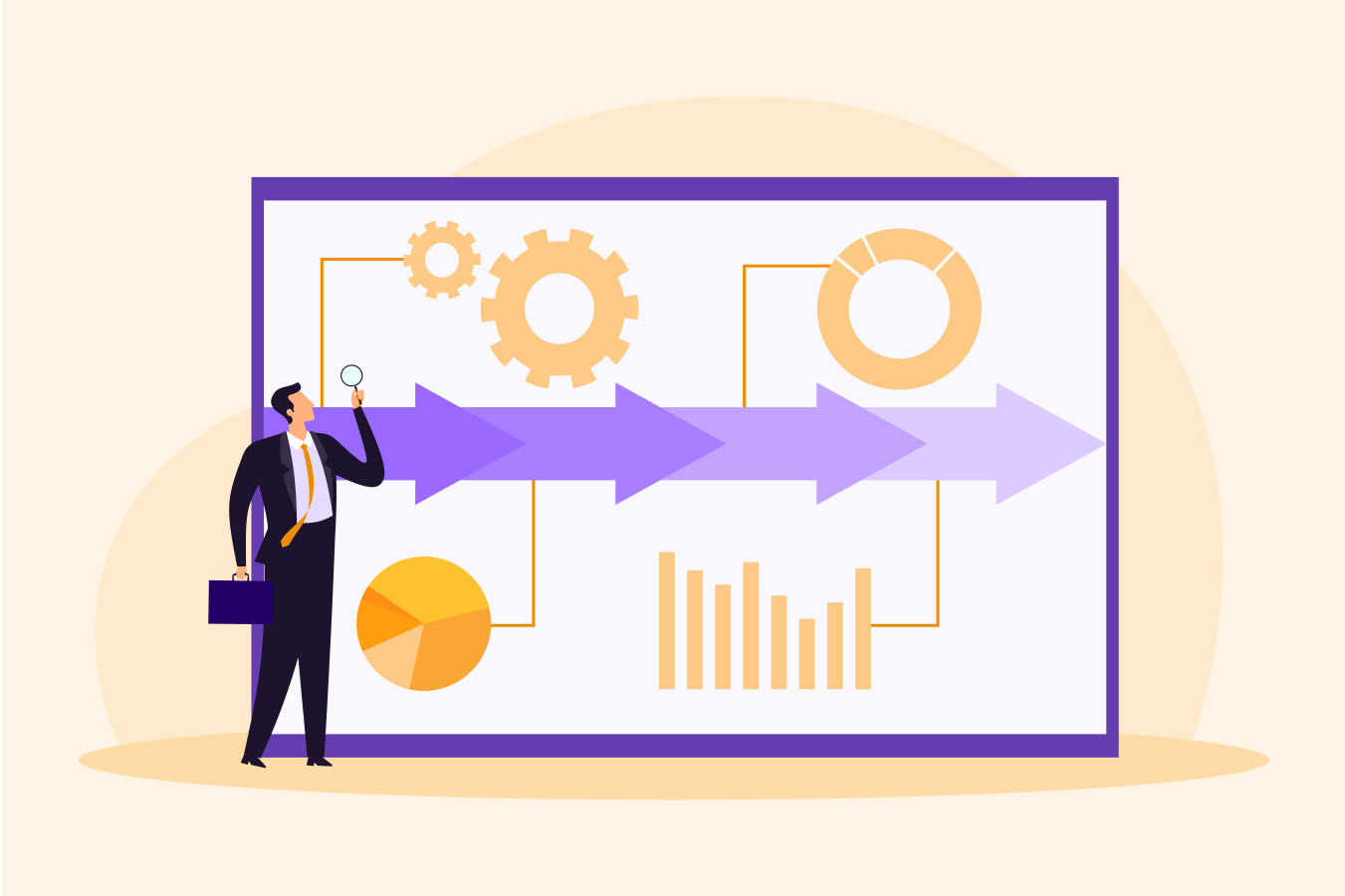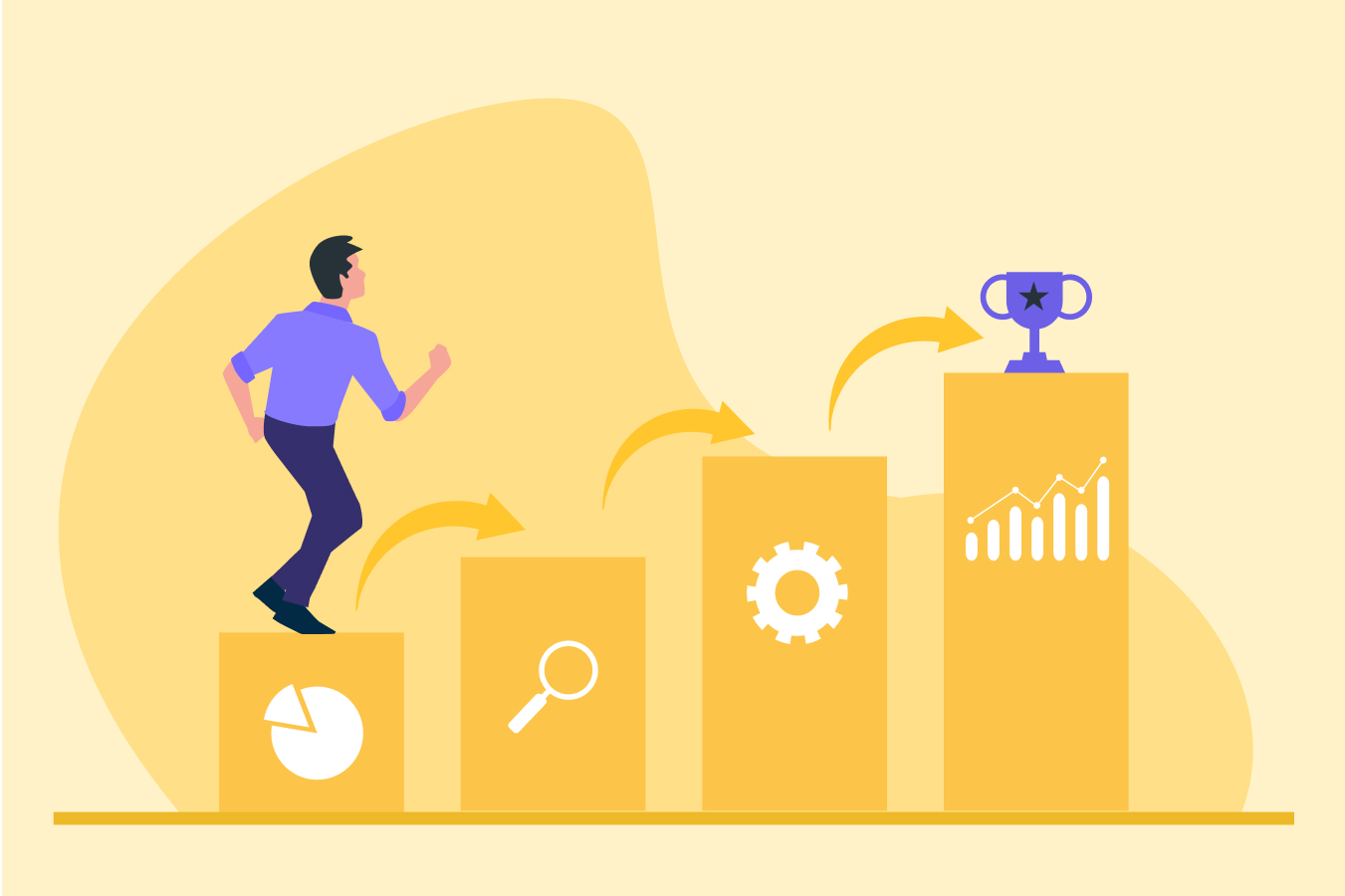Top 38 Data Science Tools To Use In 2024
It’s a fact that industries nowadays make their strategic decisions based on various sets of data, such as past trends, consumer habits, popular products, competitor behaviors, etc. But, how do these companies use relevant data to make strategic decisions?
A data scientist helps them achieve this goal! Data scientists are responsible for extracting, manipulating, pre-processing, and generating predictions from the given data. They do this by using various Data Science tools. In this blog, we will learn about these tools used by data scientists in almost every industry today.
Data Science Tools
Following are some of the most commonly used data science tools across industries.
1. SAS
Did you know that the development of SAS started in 1966? SAS or Statistical Analysis System is one of the oldest data science tools in the market. As the name suggests, it is specifically designed for statistical operations. It is a close-sourced integrated proprietary software suite. Several multinational corporations and Fortune 500 companies rely on SAS for data analysis and statistical modeling.
SAS is used for statistical analysis, advanced analytics, business intelligence (BI), and data management. It enables users to integrate, cleanse, prepare, and manipulate data by assisting in data mining, predictive analytics, and machine learning.
Key Features:
- Analyzes textual content even with typo identification.
- Provides tutorials and dedicated technical support for easy learning.
- Offers diverse tools for clinical trial analysis, time-series analysis, business intelligence applications, and econometrics.
- Produces powerful reports with the help of a simple GUI.
Also Read: Data Science Applications
2. Tableau
Tableau is a data visualization software that assists in data analysis and creating engaging presentations. This software helps present data you analyze in an interesting and understandable way.
Tableau can also visualize geographical data for plotting longitudes and latitudes on maps. The platform comes equipped with an active online community where you can share your findings and ideas. It comes with a free version called Tableau Public, which can be accessed by anyone.
Key Features:
- Allows the creation of reports and dashboards with the desktop feature to get real-time insights and updates.
- Provides cross-database join functionality to create calculated fields and join tables to solve complex data problems.
Get an Assured Job guarantee by enrolling in our data science placement guarantee course.
3. TensorFlow
Developed by Google, TensorFlow is used with advanced technologies like data science, machine learning, artificial intelligence, etc. Due to its popularity and relevance today, it is an open-source and ever-evolving toolkit. It is a Python library you can use for establishing and training data science models.
Tensorflow has a variety of applications, such as speech recognition, image classification, drug discovery, image and language generation, etc. It is easy to use as it is written in Python and is widely used for differential programming.
Key Features:
- Flexible in conducting deep learning and machine learning processes.
- Provides architecture that supports various platforms like CPUs, servers, and GPUs for deploying computation.
- Offers powerful tools for data filtration and manipulation to perform data-driven numerical computations.
4. BigML
BigML offers a fully interactable, cloud-based GUI environment that aims to reduce platform dependencies for processing machine learning algorithms. It provides standardized software using cloud computing for industry requirements.
Key Features:
- Specializes in predictive modeling and uses various ML algorithms, like clustering, classification, and time-series forecasting.
- Provides an easy-to-use web interface using Rest APIs.
- Allows the creation of a free account or a premium account based on your data needs.
5. Knime
Knime is an open-source platform. You can operate it with minimum programming expertise. The easy-to-use Graphical User Interface (GUI) of the platform assists in data extraction, transformation, and analysis.
Key Features:
- Provides easy-to-use GUI to perform tasks without advanced programming expertise.
- Uses data pipelining concept for integration of data science components.
- Allows the creation of interactive views with the help of visual data pipelines.
6. RapidMiner
RapidMiner is a popular data science tool known for its capacity to provide a secure and scalable environment for data preparation. Any data science or ML model can be prepared from scratch using RapidMiner.
RapidMiner can help you perform various data science tasks like text mining, predictive analysis, model validation, comprehensive data reporting, high-end analytics, and tracking in real time.
Key Features:
- Provides a remote execution feature for analysis.
- Utilizes the computational power of enterprise server resources and free studio for efficient model development.
- Allows integration with Hadoop.
7. Excel
Excel is a part of Microsoft Office, which can be used by beginners to understand the basics of data science. It lets you apply formulas, key combinations, and various functions to your data to make data representation and analysis easier.
It also provides an interactable GUI environment to specifically pre-process information easily, as it is not fully capable of handling large data sets. However, it is still one of the most preferred tools for creating powerful data visuals and spreadsheets.
Key Features:
- Provides pivot tables to summarize data and operate functions, such as count and sum in a tabular format.
- Easy to use for beginners.
- Allows sorting and filtering data with a single click for quick exploration of datasets.
8. Apache Hadoop
PowerBI is one of the few data science tools integrated with business intelligence. It allows the user to connect to different data sources, visualize data in dashboards and reports, and share these with others. Power BI can also be combined with other Microsoft data science tools for performing data visualization.
Key Features:
- Allows the creation of insightful reports along with a personal data analytics dashboard from a given dataset.
- Transforms incoherent sets of data into coherent sets, which can further generate powerful insights.
- Offers a diverse range of attractive visualizations to present insights to non-technical professionals as well.
9. PowerBI
PowerBI is one of the few Data Science tools integrated with business intelligence. It can be combined with other Microsoft data science tools for performing data visualization.
You can generate insightful reports along with a personal data analytics dashboard from a given dataset using PowerBI. The incoherent sets of data can be turned into coherent sets using PowerBI, which can further generate powerful insights.
Key Features:
- Provides fault tolerance and high availability during unfavorable conditions.
- Utilizes Hadoop Distributed File System (HDFS) for data storage and to achieve parallel computing.
- Allows integration with other data processing modules, such as Hadoop YARN and Hadoop MapReduce.
Also Read: Data Science Projects
10. DataRobot
DataRobot is an AI-driven, ML-integrated automation platform that aids in developing accurate predictive models. A wide range of machine learning algorithms, including clustering, classification, and regression models can be carried out by DataRobot.
Key Features:
- Supports parallel programming, which allows the use of thousands of servers to perform simultaneous data analysis, data modeling, and data validation.
- Easy-to-use and responsive GUI.
- Offers fast speed for building, training, and testing machine learning models.
11. MongoDB
Sap Hana is a relational database management system that makes data storage and retrieval easy. The in-memory data storage stores data in the main memory, offering enhanced querying and data processing for effective storage and retrieval. Text search and analytics, graph data processing, predictive analysis, etc. can be performed using Sap Hana.
Key Features:
- Catches data in JSON-like format as documents.
- Enables increased data availability, making it easier to handle big data.
- Has the potential to execute advanced analytics and data scalability.
12. Python
Python is one of the most popular languages in the world, especially for machine learning. It has a simple syntax, is easy to learn, and is cost-effective. It is exceptionally versatile and is used by various industries. You can learn more about Python’s role in data science through this in-depth data science course.
Key Features:
- It comes with dynamic semantics, built-in data structures, and dynamic typing and binding capabilities.
- It allows you to perform various mathematical, statistical, and scientific calculations.
13. Minitab
Minitab is a one-stop solution for data manipulation and analysis. It allows you to identify trends and patterns in an unstructured dataset and then simplify that data for data analysis. As a data scientist, you can automate data science calculations and graph generation while performing regression analysis.
Key Features:
- Provides customizable menus and toolbars.
- Offers probability density, cumulative distribution, and inverse cumulative distribution functions.
- Allows you to create contour and rotating 3D plots.
14. R
R is a highly scalable software specifically meant for statistical analysis and programming. Functions like data clustering, statistical modeling, data cleaning, and visualization can be performed in less time effectively.
Key Features:
- Supports cross-platform compatibility.
- Allows customization and extension through user-defined functions and packages.
- Offers powerful plotting capabilities to create visually appealing graphs.
15. QlikView
QlikView is known for its business intelligence as it lets you analyze multiple things at a given time. Its strength lies in deriving relationships out of the unstructured data and then analyzing it. It also lets you visually represent the analyzed data. Its fast in-memory data processing lets you perform data aggregation and compression quickly.
Key Features:
- Provides wide-ranging tools to create powerful dashboards and detailed reports.
- Creates and automates relations in data by using the data association feature.
- Offers in-memory data processing to create reports quickly and efficiently.
16. Google Analytics
Google Analytics is one of the most popular data science tools in the field of digital marketing. Marketers use data derived from Google Analytics to understand customer behavior and study various browsing patterns of websites to make strategic marketing decisions. It is extremely easy to use and can also be used by non-technical professionals.
Key Features:
- Allows you to view website activity in real-time, including traffic sources and active users.
- Analyzes user interaction through metrics, such as page views, bounce rate, and session duration.
- Seamlessly integrates with other Google products like Google Ads and Google Search Console.
17. MATLAB
MATLAB is an enterprise-focused DS tool. It is a multi-paradigm numerical computing environment for processing mathematical information. It is a closed-source software that facilitates matrix functions, algorithmic implementation, and statistical modelling of data.
Key Features:
- Supports creation, testing, and implementation of algorithms for a wide range of applications.
- Enables parallel execution of code across multiple cores and processors.
- Offers powerful data visualization tools.
18. Julia
Julia is a programming language designed specifically for data science. It is often compared with Python because of its advanced features and can even match up to the speed of its contemporaries like C and C++. It has a math-friendly syntax and automatic memory management which lets you perform complex statistical calculations quickly.
Key Features:
- Seamlessly integrates with data science libraries and tools written in other languages.
- Its multiple dispatch system enables generic programming and allows functions to behave differently based on the types of their arguments.
- It has built-in support for parallel and distributed computing.
19. D3.js
D3.js enables users to generate dynamic and interactive expressions from their raw datasets directly within web browsers. It has an impressive suite of features for manipulating and linking various formats of data with HTML/SVG/CSS elements in user-defined ways.
Key Features:
- Merges visualization modules and data-driven processes into document object model manipulation.
- Emphasizes the usage of web standards.
- Provides limitless possibilities when it comes down to producing customized visualizations.
20. Matplotlib
Matplotlib has a collection of tools ideal for generating everything from stationary graphs to interactive displays. This powerful software has everything necessary you need to create beautiful images easily. It is well-suited for applications involving line and scatter plots (among others).
Key Features:
- Offers many export options to extract visualization and use it on the desired platform.
- Provides functions like axes properties, line styles, and font properties to increase the readability of plots.
- Allows the creation of several plots, bar charts, scatter plots, histograms, etc. with simple lines of code.
21. Jupyter
As an open-source web-based application supporting numerous programming languages, Jupyter is an ideal choice for researchers engaged in extensive work. It covers areas including data analysis and machine learning.
Key Features:
- Provides interactive features through computational kernels.
- Supports 40+ programming languages.
- Integrates with other data-driven solutions like Apache Spark.
22. NLTK
NLTK empowers experts in the field of data science by providing powerful features such as tokenization or scrambling text. It helps convert data into meaningful pieces for easier reading comprehension in every known global dialect.
Key Features:
- Efficient for tasks like language modeling, sentiment analysis, and named entity recognition.
- Provides implementations of various statistical and machine learning algorithms.
- Integrates with other Python libraries, such as NumPy and Pandas.
23. Scikit-learn
Scikit-learn is one of the most capable machine-learning libraries available for use in the Python programming language. It has powerful tool sets that focus on classifications, regressions, and many other areas.
Key Features:
- Allows implementation of various machine learning models for regression, clustering, and classification.
- Offers a comprehensive set of features, such as scaling and normalizing features, extracting and transforming features, and handling missing values features.
- Integrates with other popular Python libraries, like Pandas, NumPy, and Matplotlib.
24. Weka
Weka focuses on important areas of data interpretation, such as preprocessing techniques, classification options, etc. The clear GUI makes it ideal for simultaneous use by teams across a variety of fields.
Key Features:
- Open-source in nature and provides customization of underlying WEKA algorithms.
- Offers multiple platform support.
- Provides easy interactions through its simple graphical user interface (GUI).
25. Microsoft HD Insights
Microsoft HDInsight excels at delivering managed data, allowing for efficient processing and analysis of massive datasets in various programming languages. It uses different tools in an organized environment.
Key Features:
- It is a full-fledged cloud platform.
- Effectively manages sensitive data across several nodes by utilizing Windows Azure Blob as the default storage system.
- Provides integration support for tools like Apache Spark and Apache Hadoop.
26. IBM SPSS
IBM’s Statistical Package for Social Sciences (SPSS) is a powerful software suite employed in performing different statistical analyses, like predictive modeling and data management. It also has extensive features for tasks like hypothesizing-testing or advanced analytics functions.
Key Features:
- Identifies a group of cases with similar characteristics.
- Builds regression models to predict continuous variables.
- Models linear relationship between predictor and outcome variables.
27. Keras
This outstanding tool helps in creating and training neural networks with ease through its user-friendly interface. It offers simplified processes to build even the most intricate deep-learning models.
Key Features:
- It is capable of running on top of TensorFlow, Theano, and Microsoft Cognitive Toolkit.
- Various applications include image recognition, predictive analytics, and natural language processing.
- Offers easy-to-use, high-level API for developing and training deep learning models with simple lines of code.
28. NumPy
It provides support for large, multi-dimensional arrays and matrices, along with a collection of mathematical functions to operate on these arrays efficiently. It is widely used in data analysis, numerical computing, and machine learning.
Key Features:
- Offers a wide range of linear algebra functions essential for tasks like regression and dimensionality reduction.
- Supports working with tabular data like Excel sheets and CSV.
29. Pandas
Pandas is a powerful data manipulation and analysis library for Python. It provides data structures like DataFrames for efficient handling and analysis of structured data. You can also get hands-on experience working with this tool through data science projects for different experience levels.
Key Features:
- Offers flexible data alignment and merging capabilities.
- Provides extensive support for time series data, including data/time indexing, rolling window calculations, and resampling.
30. PyTorch
PyTorch is a deep learning framework widely used for building and training neural networks. It offers dynamic computational graphs, making it flexible for model development and experimentation.
Key Features:
- Provides automatic differentiation through its ‘autograd’ package, enabling efficient computation of gradients for training deep learning models.
- Supports GPU acceleration out of the box for faster training of deep learning models.
31. SciPy
SciPy is a library for scientific computing in Python that builds upon NumPy. It offers a collection of algorithms and functions for numerical optimization, integration, interpolation, signal processing, linear algebra, and more.
Key Features:
- Offers optimization algorithms for finding the minimum or maximum of functions.
- Provides parallel programming tools.
- Useful for tasks involving signal analysis, like time-series analysis or processing sensor data.
Conclusion
According to a study, 91% of all the decisions taken in large organizations are based on the data extracted through various data science tools. Data science is truly the skill of the future as all the tools or platforms mentioned above have been instrumental in the progression of data science as a field.
FAQs
It is a collection of software tools and resources commonly used in the field of data science. These tools are designed to do various tasks involved in the data science workflow, such as data cleaning, analysis, modeling, and visualization.
Some of the tools used in data science are Python, R, Tableau, Power BI, ApacheSpark, and Tensorflow.
There is no single best tool for data science. It depends on the specific requirements of a project and the preferences of the data scientist. But Python, R, and SQL are among the popular choices.
Here are some popular tools for data storytelling and creating interactive dashboards.
* Tableau
* Power BI
* QlikView
* D3.js
* Google Data Studio
Some of the most popular data science tools are:
a) Python and its libraries (NumPy, Pandas, TensorFlow)
b) R and its packages (ggplot2, caret)
c) SQL
d) Tableau
e) Jupyter Notebook
Yes, SQL is an essential data science tool that allows data scientists to access, manage, and analyze large data sets.
Yes, MATLAB is a data science tool. Data scientists use it to access and preprocess data, build machine learning and predictive models, and deploy models.
Yes, Tableau is a data science tool that helps data scientists share insights with stakeholders through visualizations.
Data science tools are used to perform tasks like data analysis, data cleaning, data mining, modeling, visualization, and reporting.
While MATLAB is a useful tool for data science, Python is considered a better choice due to its ease of use, flexibility, and extensive libraries like TensorFlow and PyTorch.
R and Python programming languages are mostly used in data science for statistical analysis and data visualization.
Here are some of the common applications of data science:
a) Predictive analysis
b) Data visualization
c) Sentiment analysis
d) Fraud detection
e) Recommendation systems
In data science, C++ is used for developing and fine-tuning statistical and data tools. It is helpful for data scientists as major machine learning libraries are often written in this programming language.







